Sugar alcohols are a subset of polyols. Technically, polyols “are compounds with multiple functional hydroxyl groups bound to a carbon atom.”[1] That’s a rather complicated definition. For purposes of this article, they are naturally and artificially produced compounds used in the chemistry and food industries. Polyols used in foods are called sugar alcohols. They often are used in food products that are made for diabetics and others wanting to avoid processed sugars. They are widely used in sugar-free gum, sugar-free candies, and sugar-free chocolate bars.
Sugar alcohols have various uses in food production. They are used as bulking agents, emulsifiers, stabilisers, humectants, thickeners, texturisers, glazing agents or anti-caking agents.[2] However, by far, their most common use is as sweeteners in place of sugars in foods.
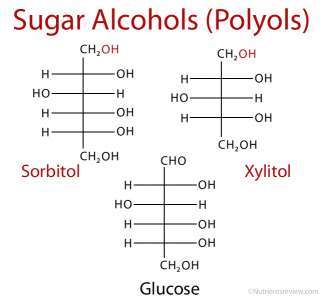
Despite their name, sugar alcohols are neither sugars nor alcohols. They have a chemical structure in which part resembles sugar and part resembles alcohol; they are both and neither, forming a distinct structure that has unique characteristics. They are derived from carbohydrates but do not break down into sugars like other carbohydrates do during digestion.
Most carbohydrates are broken down into sugars during digestion in the stomach and those sugars are absorbed into the blood stream to provide energy to all our cells. Sugar alcohols, for the most part, remain undigested in the stomach and the small intestine, remaining intact until they reach the large intestine where they are broken down to produce gasses. Thus – because sugar alcohols are not broken down into sugars – the impact that sugar alcohols have on blood sugar levels is minimal. This is why they are widely used in sugar-free chocolates for diabetics and keto-dieters.
Sugar alcohols are extremely useful because they mimic the sweetness of sucrose and other sugars when added to food while having only one-third to one-half the caloric value of sucrose (or even less).
Types of Sugar Alcohols
There are various kinds of sugar alcohols. Some of the most commonly used are:
- Maltitol
- Mannitol
- Sorbitol
- Xylitol
- Erythritol
- Isomalt
- Lactitol
- Glycerol
The caloric value and sweetness of each sugar alcohol varies and some sugar alcohols are slightly digested within the gut and, thus, can affect blood sugar levels slightly but not nearly as much as regular sucrose, other sugars, and carbohydrates do.
Sugar alcohols exist in different forms. For example, glycerol is a liquid while maltitol looks a lot like table sugar. Maltitol also has a similar level of sweetness to sugar and is slightly absorbed within the stomach and intestines. Erythritol, also in powder form, does not raise blood sugar levels at all but has only 60-70% the sweetness of sugar. Erythritol is a very good sweetener for diabetic chocolate and keto chocolate because it does not add sugars to the bloodstream or increase blood sugar levels.
All sugar alcohols – except erythritol – can cause gastric uncomfortableness in large doses (gas, flatulence, and/or diarrhea) but research has shown that these aspects of sugar alcohols may prevent colon cancers. Some sugar alcohols have been shown to help blood pressure levels. All sugar alcohols do not cause tooth decay because they are not digestible by saliva and mouth bacteria and are not reduced to decay-causing acids in the mouth. Finally, sugar alcohols have a lower caloric value than regular sugars and are extremely useful to those wishing to reduce their caloric intake to lose or maintain weight loss.
| Name | Sweetness Relative to Sucrose | Food Energy (kcal/g) |
| Sucrose | 1.0 | 4.0 |
| Sorbitol | 0.6 | 2.6 |
| Xylitol | 1.0 | 2.4 |
| Maltitol | 0.9 | 2.1 |
| Lactitol | 0.4 | 2.0 |
| Isomalt | 0.5 | 2.0 |
| Mannitol | 0.5 | 1.6 |
| Erythritol | 0.8 | 0.21 |
Table 1. Food Energy and Relative Sweetness of Various Sugar Alcohols. This table compares sucrose sweetness and food energy to various sugar alcohols used in foods for various reasons.[3]
Why Ross Chocolates Uses Sugar Alcohols
Our founder, Bob Ross, started searching for sugar-free chocolate in 1997 when he – a devoted chocolate lover – was diagnosed with diabetes. Bob spent two years developing chocolate recipes because he couldn’t find a sugar-free chocolate that tasted close to the flavour and texture of the sugar-sweetened chocolate he had once enjoyed. Finally, he settled on a recipe he created using maltitol as its sweetener and the rest, as they say, is history.
Today, Ross Chocolates continues to make Bob’s original maltitol chocolate recipes for those devoted to it, but our newest products are sweetened with natural stevia and erythritol. We use erythritol because erythritol is the only sugar alcohol that does not cause blood sugar increases at all (see Table 1) and does not cause the digestive system upsets (gas, bloating, flatulence) that other sugar alcohols do when eaten in large quantities.
A 2022 UBC Study proved that Ross Dark Chocolate sweetened with stevia and erythritol does not impact blood sugar levels at all and, thus, is an excellent choice for those with diabetes or who follow a keto-diet because all new Ross Chocolates are extremely low carb without causing any digestive upset.
Updated July 13, 2022
[1] European Association of Polyol Producers. White Paper. Retrieved on July 7, 2017 from http://www.polyols-eu.org/documents/What_are_polyols.pdf
[2] WiseGEEK. What Are Polyols? Retrieved on July 7, 2017 from http://www.wisegeek.com/what-are-polyols.htm.
[3] Wikipedia. Sugar Alcohols. Retrieved on July 11, 2017 from https://en.wikipedia.org/wiki/Sugar_alcohol
Browse Our Chocolate
-
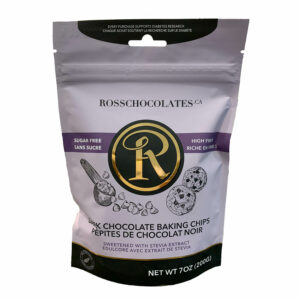 Dark Chocolate Baking Chips$47.99
Dark Chocolate Baking Chips$47.99 -
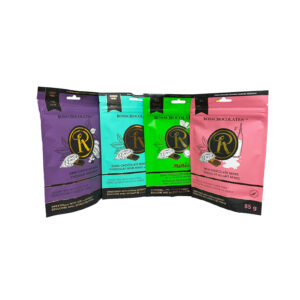 Milk & Dark Minis Pouch Variety Pack$23.99
Milk & Dark Minis Pouch Variety Pack$23.99 - Product on sale
 Milk & Dark Chocolate Variety Pack (pack of 12 bars)Original price was: $39.99.$13.99Current price is: $13.99.
Milk & Dark Chocolate Variety Pack (pack of 12 bars)Original price was: $39.99.$13.99Current price is: $13.99. -
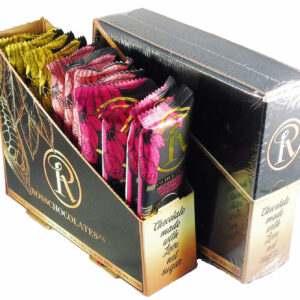 Milk Chocolate Variety Pack (pack of 12 bars)$39.99
Milk Chocolate Variety Pack (pack of 12 bars)$39.99 -
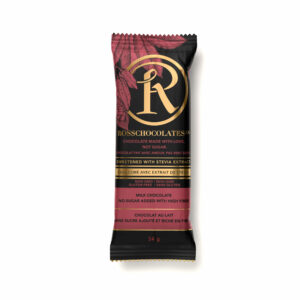 Milk Chocolate sweetened with Stevia (pack of 12 bars)$27.99
Milk Chocolate sweetened with Stevia (pack of 12 bars)$27.99 -
 Dark Chocolate sweetened with Stevia (pack of 12 bars)$27.99
Dark Chocolate sweetened with Stevia (pack of 12 bars)$27.99
-
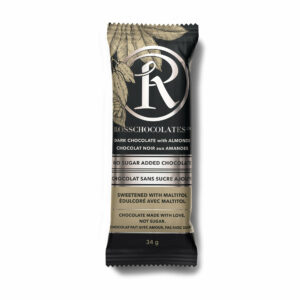 Dark Almond Chocolate sweetened with Maltitol (pack of 24 bars)$69.99
Dark Almond Chocolate sweetened with Maltitol (pack of 24 bars)$69.99 -
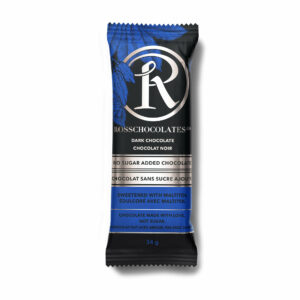 Dark Chocolate sweetened with Maltitol (pack of 24 bars)$69.99
Dark Chocolate sweetened with Maltitol (pack of 24 bars)$69.99 -
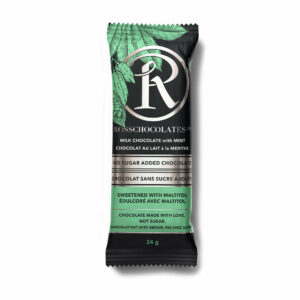 Milk Mint Chocolate sweetened with Maltitol (pack of 24 bars)$69.99
Milk Mint Chocolate sweetened with Maltitol (pack of 24 bars)$69.99 -
 Milk Coconut Chocolate sweetened with Maltitol (pack of 24 bars)$69.99
Milk Coconut Chocolate sweetened with Maltitol (pack of 24 bars)$69.99 -
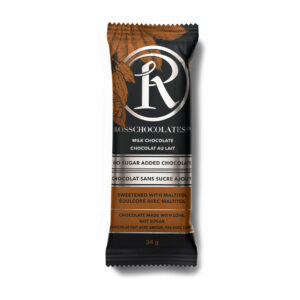 Milk Chocolate sweetened with Maltitol (pack of 24 bars)$69.99
Milk Chocolate sweetened with Maltitol (pack of 24 bars)$69.99 -
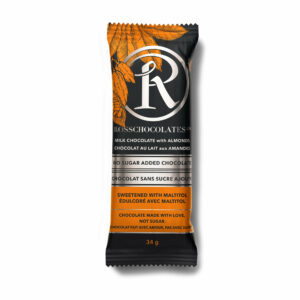 Milk Almond Chocolate sweetened with Maltitol (pack of 24 bars)$69.99
Milk Almond Chocolate sweetened with Maltitol (pack of 24 bars)$69.99





0 Comments